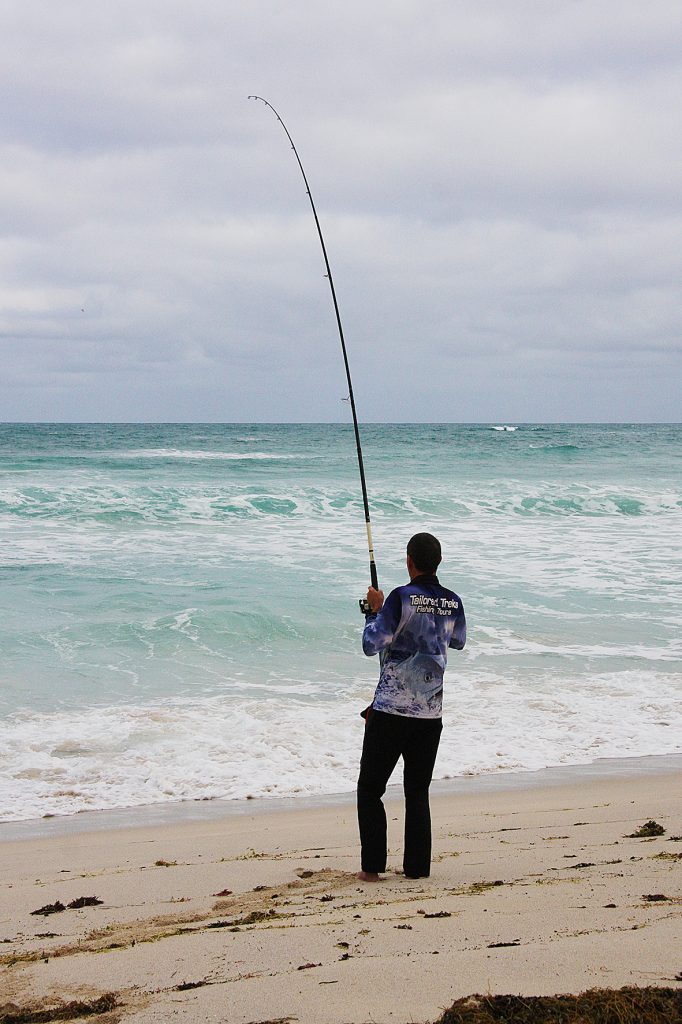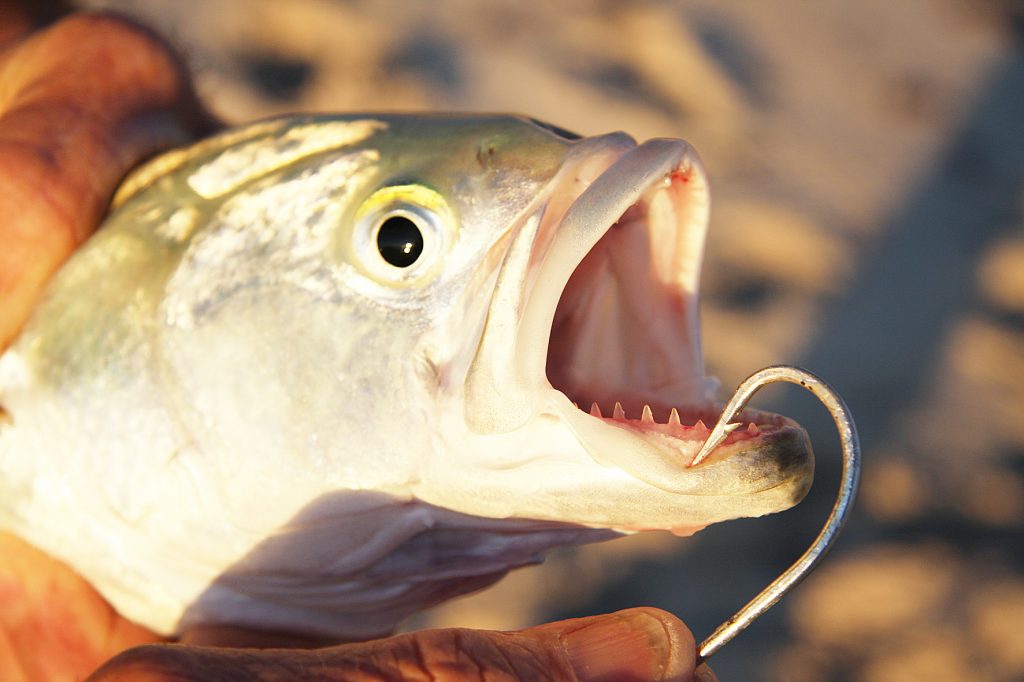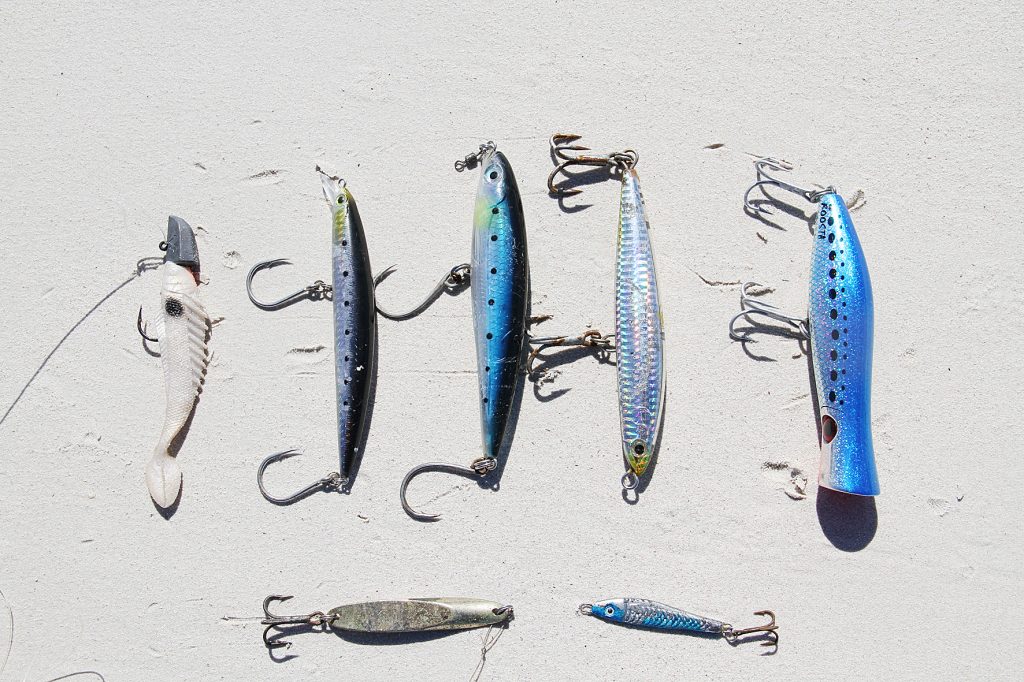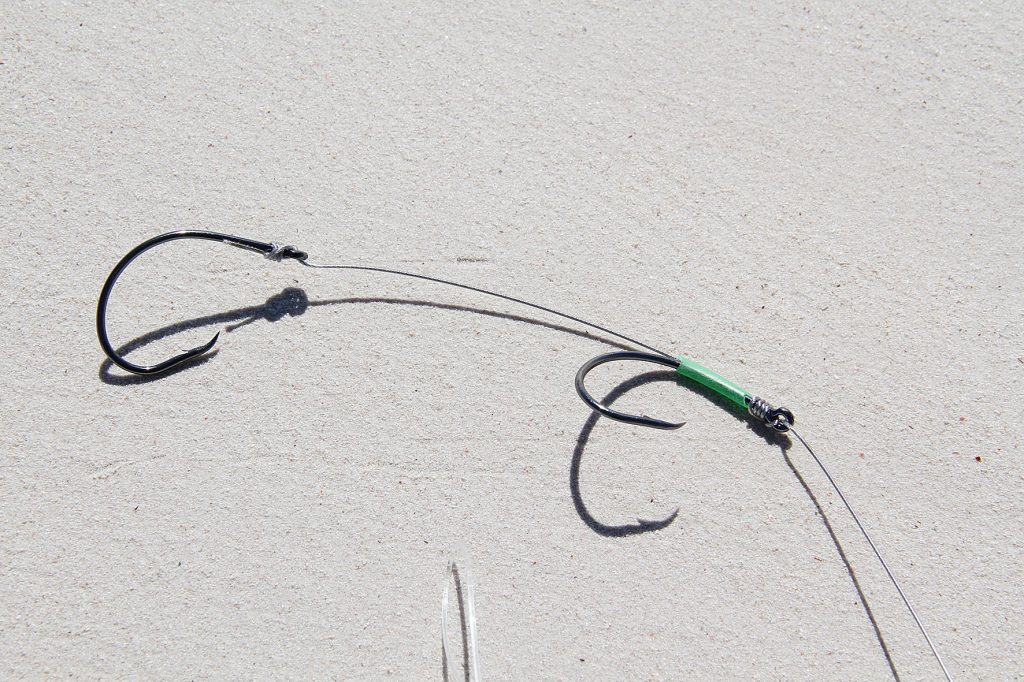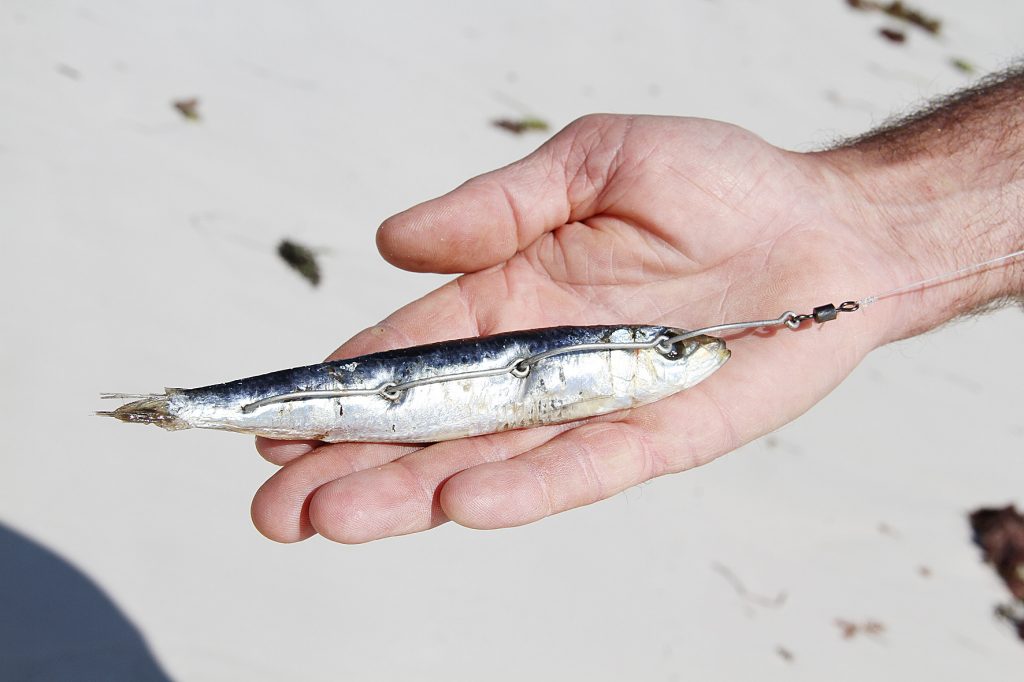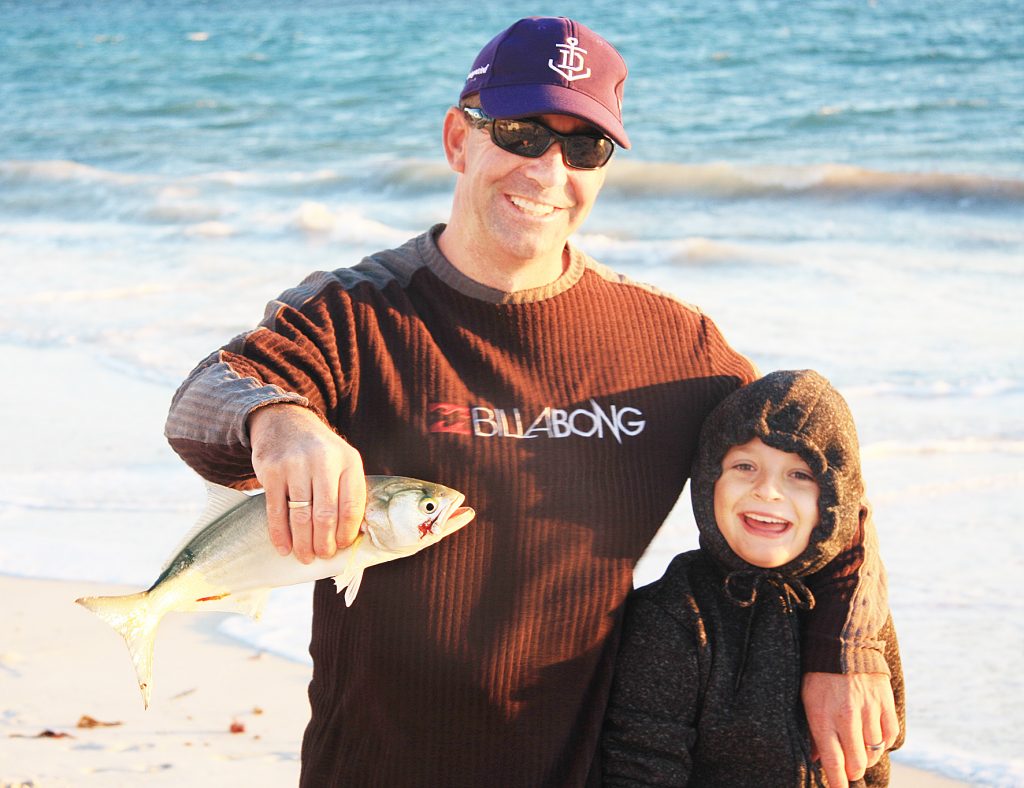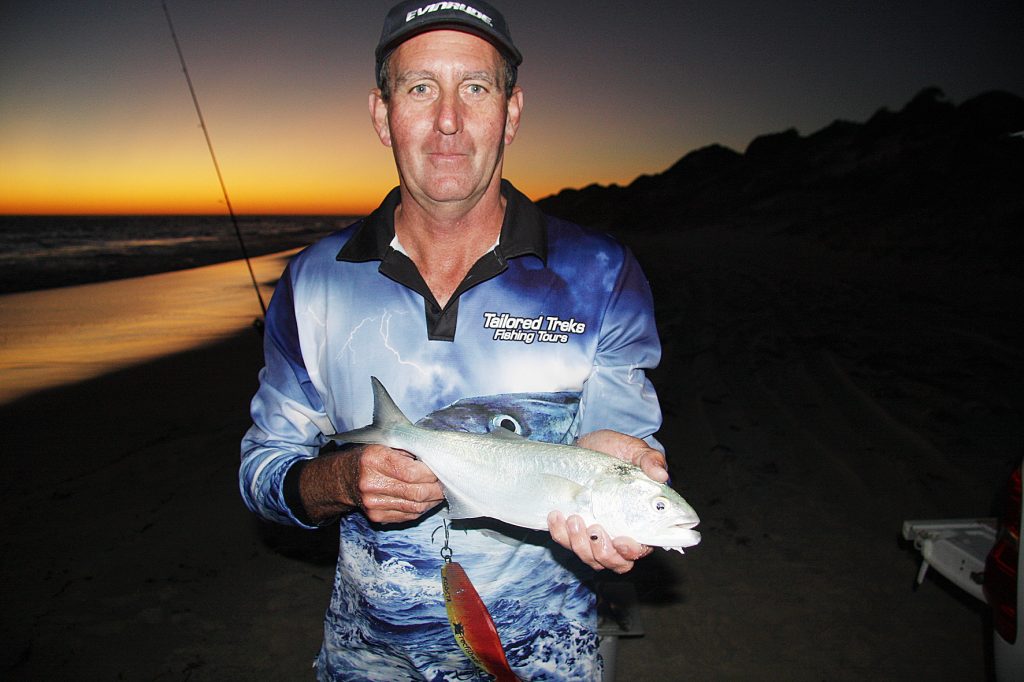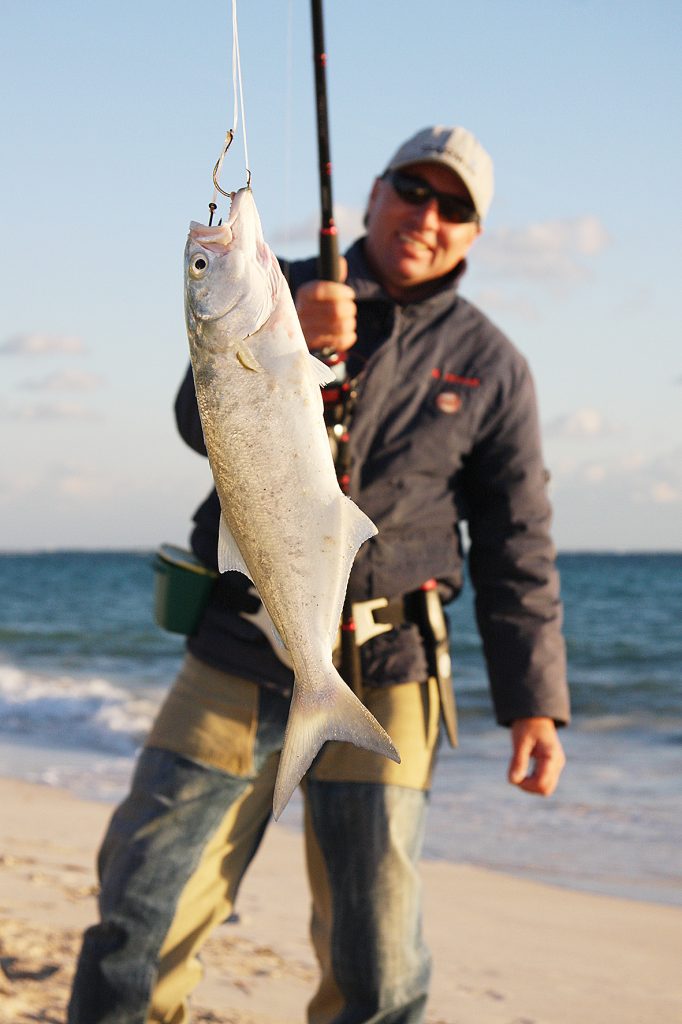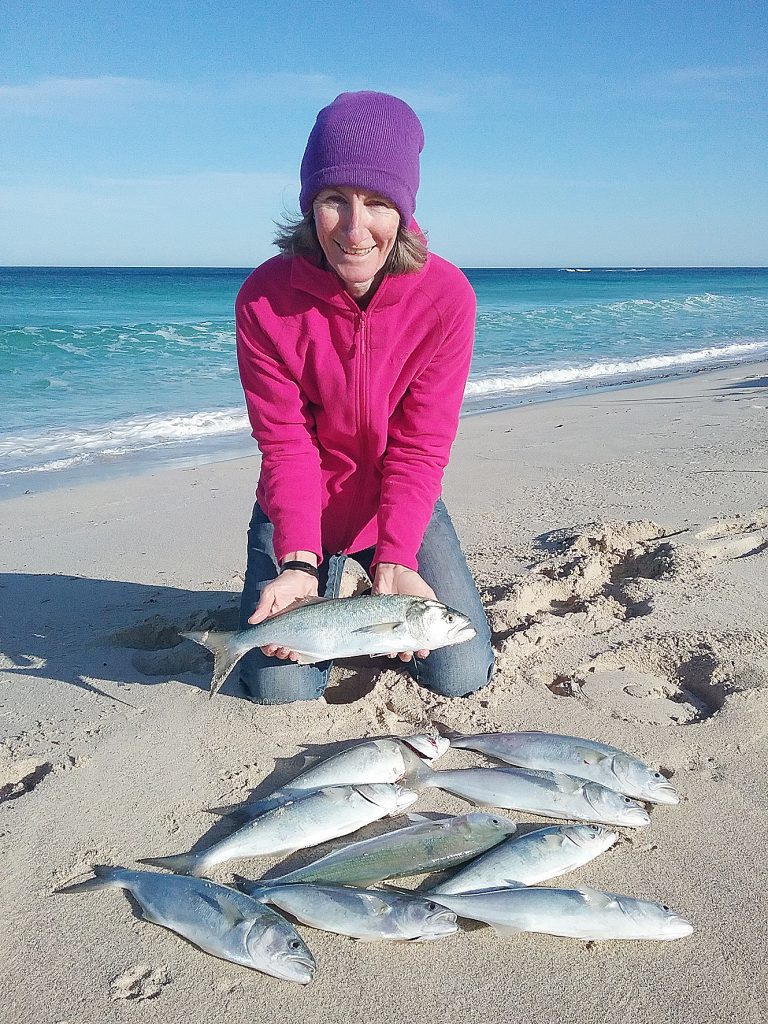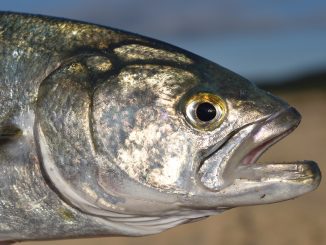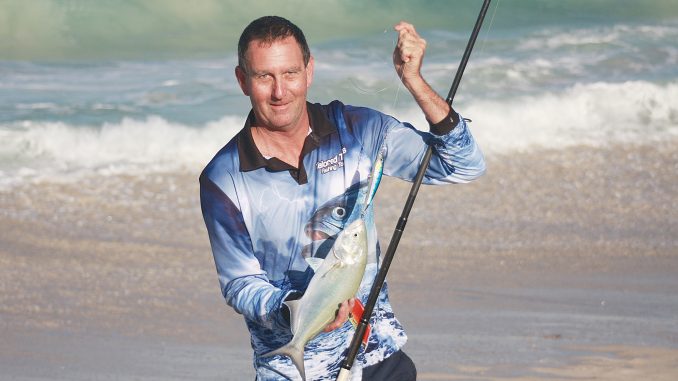
by Peter Fullarton •
This time of year is a great time to get stuck into some tailor along the beaches, in the estuaries and out in the bays, so there’s no better time to hit the water in search of these great fighters!
Tailor facts
Tailor are considered a pelagic fish and are widely distributed in subtropical and cooler tropical seas, preferring a temperature range 18-25°C. There are at least two theories I am aware of as to how they came by the name ‘tailor’. One story is in relation to how they often attack at the prey tail first, making it easy to finish the kill. The other refers to their sharp teeth and their ability to cut through older style rag fishing nets like a clothing tailor’ sharp scissors. Both have merit and give tailor a very fitting name. In other parts of the world they are sometimes known as bluefish.
Tailor range on the WA Coast from Exmouth to Albany, with low numbers of fish along the very South Coast. At about 1.5-2 years, they reach a minimum legal size of 30cm. A bag limit of eight fish per angler applies. There is also a limit of only two fish over 50cm, which they reach at about 5 years old. Some tailor have been known to live for 14 years of age and reach a length of 1.2m!
Tailor sexually mature between 30-40cm and release large volumes of eggs. The larvae are planktonic and distributed on currents. The fry grow to 40-80mm over 2 months before entering juvenile habitats like rivers, estuaries and bays.
Tailor can migrate hundreds of kilometres in a matter of weeks. As a result, different areas of the coast will hold different size classes and volumes of fish at certain times of the year as they move north to south and back again through the year. Larger fish are found throughout their range, though the coast from Kalbarri to Carnarvon is renowned for trophy size tailor. The majority of the larger fish are found along this region.
Tailor’s triangular razor sharp teeth are able to easily cut through flesh, scale and even the bone of their prey. Make sure to respect them and keep fingers clear of the mouth, especially with the larger fish. Smaller tailor to 50cm are known as ‘choppers’. They swim in packs, hunting schools of baitfish, where they cut the bait into pieces small enough to swallow. Larger tailor are referred to as ‘greenbacks’, with their backs becoming dark green and their head more rounded at about mid 50-60cm. Greenbacks are generally found in much smaller groups or as individuals.
Tailor are found in a variety of habitats. Rivers, bays and estuaries can all hold quite good numbers of good-sized fish that hunt schools of baitfish. Reef breaks and turbulent beach gutters are often haunted by some of the larger specimens. The nearshore coastal strip is where the majority of fish are caught. They rest are in deeper waters a little further from shore and will move in at dawn and dusk to feed. They can also be quite active in bright moonlit nights.
GEAR
Rods, reels and line
The outfit can be quite subjective, and it really depends on where you are fishing and the conditions. Primarily, spin gear is the choice. A small 6-8ft rod is all you need to fish a river or from a boat. When fishing the beach or off the rocks, rods should be at least 10ft. In rough surf conditions or in a strong sea breeze you will need to upgrade to a heavier, longer rod to handle larger sinkers and big waves.
Tailor fight cleanly and won’t take you into the reef, but they will jump quite a lot, so using mono for the stretch can help to stop them throwing the hook. Although, braid also has advantages of giving the angler a more direct detection of the bite and allows a quick solid strike to set the hooks. Line weight can also be quite light at around 10-20lb. This poundage of line will easily subdue the average fish and make it easy to cast lightly-weighted baits or lures.
Baits
Tailor are not fussy at all when it comes to bait. The most common bait would be pilchards, but almost any whole fish or fillet bait will work very well. Some popular alternatives are scaly mackerel, whiting, herring, and even tailor fillets. They will also happily take squid, octopus or just about anything else you care to throw out once they’re on the bite.
Rigs
The most common rig used for chasing tailor would be whole pilchards set on a gang of hooks. A gang made up from four 4/0 Mustad Tarpon hooks is very popular with a lot of tailor fishers. The gang will fit right down to the tail on average sized pilchards, so that little nip from a chopper at the tail still often leads to a solid hook-up and will catch everything from smaller herring and tarwhine to large mulloway and sharks.
Unless I am chasing the smaller fish, I like to use three 6/0 hooks, as it can help avoid hooking the undersized ones and fits a large-sized pilchard well.
When fishing from boats or rock walls or in light or offshore winds, a light running sinker or weightless pilchard rig is the best option, and enables you to keep the bait moving mid-water. Tailor will feed in all of the water column, but are always suckers for a slow mid-water moving pilchard bait. In strong surf or winds, the gang can be set on a paternoster rig using a three-way swivel and a heavy sinker to anchor the bait to the bottom. Always use black swivels, as anything shiny is likely to be bitten in a hot bite and those sharp teeth will instantly cut through any line under the tension of a fighting fish.
Attaching a glow stick to the rig can increase catch rates at times. The tailor can be conditioned during a hot bite to associate the glow with food, so they can be onto the bait as soon as it hits the water and the bite may run well into the night once the fish have been conditioned. They can also assist in casting in the dark, increasing your awareness of where the bait is.
Wire is not essential when using a gang of hooks. Fish rarely swallow a whole gang, although I would recommend a heavy 50-80lb mono or fluorocarbon leader, as there will be plenty of nicks from the sharp teeth, especially during a hot bite. The swivel can be attached to the head of the gang, giving a few more centimetres of leeway and removes the risk of other fish bitting at the swivel during the fight. If fishing with snelled hooks, it is also advisable to use some wire as tailor will be attacking the bait shredding the line between each hook. If very large tailor are around, I would tend to use a nylon-coated wire trace of around 40-60lb.
Method
Fishing the right times will greatly increase success, with dawn and dusk the prime time. Some locations will fish better in a morning, especially during the new moon period and the fish will quite likely bite through to mid-morning. Other locations will fire up better in the evenings and the fish may bite well into the night under a bright moon.
Tailor are a pack hunter, so you need to find the pack or attract it to where you are fishing. Look for baitfish showering out of the water, as that is normally a pretty good indicator that some tailor are on the hunt. If the fish are not there, then you need to use some berley to attract them and keep them interested.
Firstly, it is very important to be at your fishing spot at the right time. This would be about 45 minutes before sunset or just before first light, and I mean lines in the water at this time. You may not be catching them at first, but the process of attracting them has begun. Pilchards self-berley, and if you are fishing with several people in one spot, often that is enough to start a tailor feeding frenzy. Each time a fish hits a bait, there is an explosion of pilchard offal and oils released.
What you do once the fish start will often determine the difference between landing a handful of fish or scores of them. The trick is to keep the momentum going, or the pack will move off. Cast to the same spot each time so the fish know where to expect the bait and the berley effect of the pilchards will be at its strongest. If you are fishing solo or struggling to keep a steady stream of baits in the water with a group, keep throwing handfuls of berley to keep the frenzy on. Chopped pilchards makes a great berley, but adding a mix of chook pellets to adsorb the juice and some fish oil will extend the effect.
There is no time to rest once the feeding frenzy is on. It is often only over the short light transition period, so you need to make the most of it while you can. If you lose the momentum of baits in the water, the fish will likely move off. Done well, fish numbers will grow the longer you are fishing and the more frenzied they become, with several fish smashing at the bait each cast as it hits the water. It is not at all uncommon to be landing two fish on a single gang. Have some spare rigs ready to quickly tie on in case one gets busted off or even have a second rod ready and rigged so you don’t lose the momentum.
Tailor do like a moving bait, so when casting pilchards keep a slow retrieve up. Make sure to place the bait well in the gang, so it does not spin but swims naturally. Measure your pilchard against the gang so the top hook will fit through the eye of the pilchard, then starting with the bottom hook passing each hook through the lateral line, so each hook sits flat against the bait before finishing the top hook through the eye. The bait should lie flat in a relaxed position.
Larger greenback tailor like to hunt around the aerated water of reef breaks or surf gutters, so fishing for them is somewhat different than chasing the marauding packs of choppers.
Offshore reef breaks can be fished from a boat, casting lures or garfish to the aerated water (white water) of the break and is a very exciting way to fish for them. You need one person to concentrate solely on driving the boat and watching the swells for safety, while the other casts to the wash.
There are plenty of opportunities to manage greenbacks on lures or bait shore-based as well. Places like Oyster Reef or Blue Holes at Kalbarri are well known for the big greenbacks they produce. Right along the South West Coast, including Perth metro, there are reefs that will produce big fish. When there is an offshore wind, you can balloon garfish into the white water of reef breaks that are a little too far out to cast to. By moving the line in and out and walking up and down the beach you can move the bait about the wash of a reef until you manage to find that monster.
Big green backs also love to hunt the surf gutters, and using mullet or smaller tailor as bait anchored in the gutter will also just as likely yield a nice mulloway surprise.
Lure casting for tailor
Tailor are a ferocious, aggressive predators, which makes them an ideal fish to target with lures. I find it is also one of the most fun ways to catch them. Matching the line class to the size fish you are chasing will enable the fish to show its full sporting potential.
Metal slice lures are popular for the long casting that may be needed to reach a nearshore reef, as you can punch them out into a stiff sea breeze. I rig these on a short length of light wire just to be sure a jumbo won’t swallow it whole and bite the lure off. The best method is to cast out and allow the lure to sink a few meters, before starting a fast retrieve, keeping the rod tip low to the water so the lure remains under the surface for the whole retrieve. These lures work equally well trolled behind a boat.
Bibbed hardbody lures are a good option when casting from a rock wall or from a reef shelf. Look for long cast models, as the more water the lure gets to swim the more chance you have of getting a strike. Pilchard imitations colours with plenty of flash are most effective. Bibbed minnows are also great for trolling behind the boat. Mix up the retrieve rates to find what is working on the day to induce a strike.
Stickbaits are also very effective and the lure I choose more often than not for tailor. I find a good stick bait can be used in most conditions and locations. The retrieve can be mixed up from some flat out bursts skittering the bait across the surface to a slower retrieve to impart a wounded action to the lure. When there are large swells it can be difficult to use finesse to impart action to your stickbait. In these circumstances, pulsing the lure using the rod to move the lure in lunges between pauses as you wind the slack line back can find several fish trying to eat the lure simultaneously
Surface poppers are also great fun. One sure way to get the heart pumping is to witness the surface smash on a popper from a good-sized greenback. They are also useful to fish shallower reefs, as tailor will sit in the deeper pockets of a reef top smashing any bait or passing lure. Again, natural pilchard colours work well, and I also have a lot of success on the white with red head. You can ‘bloop’ the popper in, or employ a steady fast retrieve through the waves.
Soft plastics are very effective, but tailor will quickly destroy the tails. Paddle-tails can be worked with a slower retrieve and can give the fisher a bit of respite from working the hardbody lures when the fish are slow. Work the lures with a lift and drop or a slow roll to mimic a wounded baitfish.
Tailor care
Tailor have a delicate oily flesh, with a quite distinctive taste. They require more attention after capture care than the average fish. They only have a short shelf life for the best eating quality. Looking after them will make a significant difference to both quality and shelf life. Tailor should be bled upon capture and chilled, otherwise the flesh will quickly deteriorate, becoming mushy and the flavour becomes a much stronger fishy taste. Any excess should be frozen immediately in vacuum seal bags and eaten within eight weeks. Tailor is an excellent choice of fillet to use for smoking and this will extend the shelf life. They can be filleted and eaten either skin on or off.
With all that said, be sure to take advantage of the magnificent tailor fishing we have here on the West Coast!

